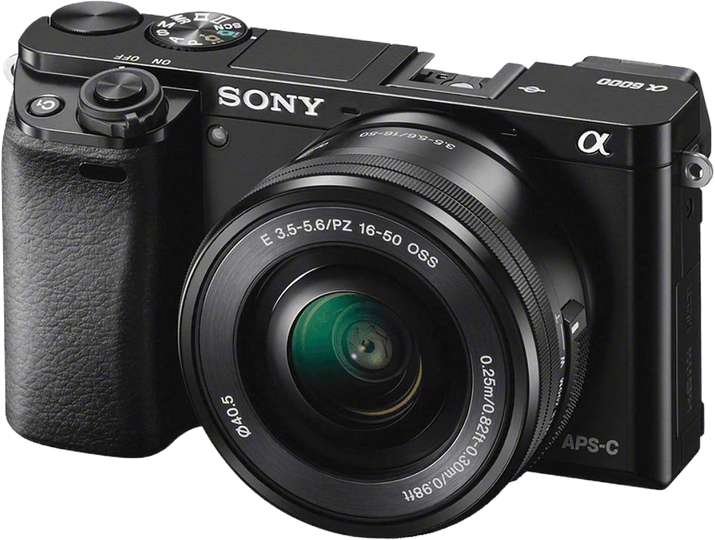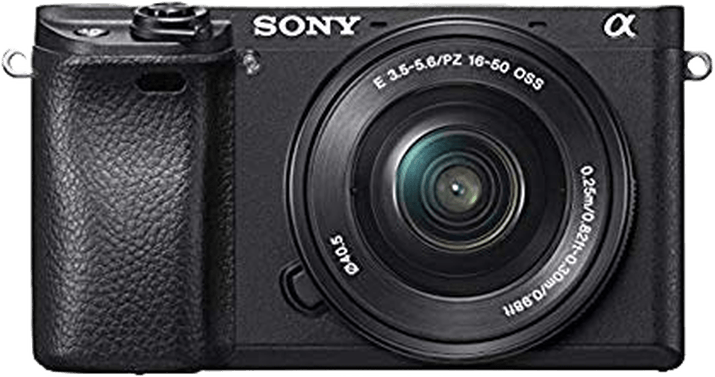Sony a6000 vs a6300 Comparison
Sony a6000

Sony a6300

The Sony a6300 comes out ahead with a score of 61/100, while the Sony a6000 trails behind at 57/100. Both cameras are mirrorless and share the same dimensions of 120 x 67mm, with the a6300 being slightly thicker at 49mm compared to the a6000’s 45mm. The a6300 is also heavier, weighing in at 404g compared to the a6000’s 344g.
The a6300’s higher score is due to its improved features and performance. Launched in 2016 with a price tag of $1000, it offers better value for money compared to the a6000, which was released in 2014 and priced at $799.
However, the a6000 has its advantages, as it is lighter and more compact, making it a more convenient option for those who prioritize portability. Despite its lower score, the Sony a6000 remains a strong contender for photographers seeking a lightweight and affordable mirrorless camera.
Sony a6000 vs a6300 Overview and Optics
The Sony a6300 narrowly wins the optics comparison with a score of 68/100, while the Sony a6000 scores 67/100. Both cameras share several specifications, including a shooting speed of 11 fps, a CMOS sensor, a Bionz X processor, an APS-C sensor size, a Sony E lens mount, and no image stabilization.
The a6300’s advantage comes from its higher DXOMARK score for the sensor, which is 85 compared to the a6000’s 82. This difference means the a6300 has a slightly better sensor performance, resulting in improved image quality. Despite having a marginally lower megapixel count (24.2 vs. 24.3), the a6300’s superior sensor helps it achieve better overall optics.
On the other hand, the a6000’s higher megapixel count provides slightly more detail in the images. However, this advantage is minimal and may not be noticeable in most shooting situations. Additionally, the a6000’s lower DXOMARK score for the sensor indicates that its image quality is slightly inferior to the a6300’s.
Considering these factors, the Sony a6300 is the better choice for those seeking improved optics and image quality. Its higher DXOMARK sensor score contributes to its superior performance. Meanwhile, the Sony a6000’s advantage in megapixels is not substantial enough to outweigh its lower sensor score. Thus, the a6300’s slight edge in optics makes it the preferable option for photographers who prioritize image quality.
Sony a6000 vs a6300 Video Performance
The Sony a6300 emerges as the superior camera in terms of video capabilities, boasting a video score of 91 out of 100, compared to the Sony a6000’s score of 56. Both cameras share similarities in their specifications, yet the a6300 possesses distinct advantages that set it apart.
In terms of commonalities, both the a6000 and a6300 are part of Sony’s renowned mirrorless camera lineup, ensuring top-notch performance and image quality. Furthermore, both models feature interchangeable lenses, allowing users to adapt their equipment to various shooting scenarios.
The a6300 outshines the a6000 in several key video aspects. Its maximum video resolution is 4K (3840 x 2160), compared to the a6000’s Full HD (1920 x 1080) resolution. This difference enables the a6300 to capture higher quality and more detailed videos. Additionally, the a6300 offers a maximum video frame rate of 120fps, doubling the a6000’s 60fps. This allows for smoother motion capture and improved slow-motion capabilities. Furthermore, the a6300 has built-in time-lapse functionality, a feature absent in the a6000.
While the a6000 does not surpass the a6300 in any specific video aspect, it is worth noting that its lower price point may appeal to budget-conscious consumers who still desire a reliable camera with solid performance.
Considering the differences in video capabilities, the Sony a6300 is the clear winner, offering superior resolution, frame rate, and time-lapse functionality. Meanwhile, the Sony a6000 remains a viable option for those seeking a more affordable camera with acceptable video performance.
Sony a6000 vs a6300 Features and Benefits
The Sony a6300 emerges as the winner in the features comparison, scoring 54 out of 100 points, while the Sony a6000 scores 41 out of 100 points. Both cameras share several specifications, making them quite similar in certain aspects.
The common specs between the two cameras include a 3-inch screen size, screen resolution of 921,600 dots, the absence of a touchscreen, the presence of a flip screen, and the lack of GPS. Additionally, both cameras come with WIFI connectivity but do not have Bluetooth capabilities.
The Sony a6300 outperforms the a6000 in several areas, contributing to its higher feature score. However, the specific reasons for the a6300’s superiority are not provided within the given information. It is essential to consider these factors when deciding between the two models, as they may significantly impact the user experience and the camera’s performance.
On the other hand, the Sony a6000 still has some advantages despite its lower feature score. It may offer benefits in terms of cost or other factors not mentioned in the specifications. It is crucial to evaluate these aspects to determine if the a6000 could be a more suitable option for specific users or situations.
After comparing the features of the Sony a6000 and the Sony a6300, it is clear that the a6300 is the better camera in terms of specs. However, it is essential to consider the specific factors contributing to its higher score and any potential advantages the a6000 may have before making a final decision.
Sony a6000 vs a6300 Storage and Battery
The Sony a6300 outperforms the Sony a6000 in storage and battery with a score of 24/100, compared to the a6000’s 21/100. Both cameras have one memory card slot and use the same NP-FW50 battery type. They also do not support USB charging.
The a6300 accepts SD, SDHC, and SDXC memory cards, while the a6000 additionally supports Memory Stick Pro Duo and Pro-HG Duo cards. This provides the a6000 with more storage options. However, the a6300 has a longer battery life of 400 shots, giving it an advantage over the a6000’s 360 shots.
Though the a6000 has more memory card compatibility, the a6300’s longer battery life makes it a better choice for extended shooting sessions. Both cameras have their strengths, but the a6300 slightly edges out the a6000 in storage and battery performance.
Alternatives to the Sony a6000 and a6300
Are you still undecided about which camera is right for you? Have a look at these popular comparisons that feature the Sony a6000 or the Sony a6300:

